Rising Tide: Building Resistance Tour – Site C - Peace River Valley - Treaty 8 Territory – May 14th
BLOG POST posted on Mai 27, 2013 by Rising_Tide-Vancouver_Coast_Salish_Territories
You can’t visit the Peace River Valley and not hear about Site C—even if you are on a fracking tour.
We learned this even before we met with any of the local residents in Fort St. John. The closer you get to the city, the more billboards indicating opposition to the mega dam speckle the highways and streets. “Stop Site C” and “Keep the Peace” are some of the clear messages we saw entering town.
We were able to meet with two key members of the Peace Valley Environmental Association (PEVEA). PEVEA has existed for about 37 years, and has been fighting the Site C project since its inception. Yet the fight against the mega dam is much older- PEVEA board member, Andrea Morrison told us that residents have been mobilizing for over 50 years.
After so many years, however, the time is now to be keeping an eye on this project. The project is currently undergoing an environmental assessment (again) and public comment period has just recently closed. With the help of a few organizations such as LeadNow, Sierra Club BC, and Y to Y (Yellowstone to Yukon), local residents and activist groups such as the PVEA were able to get thousands of letters of comment to the ministry with respect to the project. People in BC are starting to wake up to the magnitude of this project, particularly because people are becoming more aware that this $8 billion project would be used to fuel proposed Liquefied Natural Gas (LNG) facilities on the Pacific Coast.
The Site C dam would be publicly subsidized, as it is a BC Hydro initiative, but the energy would not be used to provide locals with energy—it would be used to supply private LNG plants intended to export even more dirty energy. The economics of the project make it clear that this project is unjust and merely facilitates public funds being siphoned into private pockets.
But local residents have many more concerns than merely dollars and cents
Site C would require the flooding of approximately 5,340 hectares of land and over 100 km of river valley along the Peace River and its tributaries. This would include over 3,000 hectares of wildlife habitats, heritage sites, and "Class One" and "Class Two" agricultural land. Ranchers, farmers, and residents are very aware that the Peace River Valley is incredibly unique with its long growing season and ability to provide “a hundred mile diet for local residents given the valley’s microclimate,” says Andrea from PVEA. Ken (PEVEA board member) mentioned that “you can even grow cantaloupe!” Agricultural land and wildlife habitat in the area would be decimated, and numerous families would be forced out of their homes and off their land if this project were to go through.
What is troubling still, is that both BC Hydro and the province are very aware of these impacts “but don’t seem to care,” says Morrison. She explains how the environmental assessment (EA) acknowledges the damage the dam could cause but has no plans to mitigate these impacts. Even if the impacts were not acknowledged in the EA, people do not have to look far to understand the potential impacts.
The WAC Bennett dam was constructed in 1967 and is located 23 km upstream away from the proposed Site C dam and has caused flooding, forced people out of their homes, destroyed agricultural lands, and changed the climate of the region causing stronger winds as far as Prince George located at least a 5 hour drive away. Additionally Site C would destroy First Nations burial sites. This is definitely not history worth repeating.
Treaty 8 First Nations boycotted the official announcement for Site C at the Bennett Dam in 2010. West Moberly First Nation is also considering legal action to oppose the dam proposal. During our trip we were fortunate to meet some indigenous organizers at the at the Saulteau First Nation band office. There we saw the seven boxes of environmental assessments for the proposed Site C dam and were shocked to learn that two people were responsible to review all resource extraction projects and are often only given 30 days to file any objections to many projects which are proposed on their territory. If they are unable to respond in time, the bands consent is assumed and the projects are quickly approved.
Unfortunately, the most recent news of the provincial election can definitely worry local residents, since the Liberals have no plans of bringing back the BC Utilities Commission (BCUC), which would provide oversight for assessing the impacts. “The NDP would likely bring back the BCUC,” says Morrison who also explained that the last time the BCUC assessed the project they found that there was just no need for the project.
And that is just it...this energy is not for people, it is for corporations. At different times, project proponents have said that the energy generated from the dam would be for different industries such as mining, or for export to the United States. Now we are hearing it is for LNG.
But regardless of the intention of the project, people who would be impacted know that they will be impacted and are willing to put up the fight. They want to protect their own backyards as well as those who will be implicated by associated projects. Site C opposition has not just been limited to discussing the impacts on the Peace River Valley, but people have also been concerned about where this energy would go. “Why would we allow this dam to go fuel LNG on the coast and allow a pipeline to be put through that gorgeous land?” asks a rancher we visited.
We agree. Which is why we won’t let it happen.
The site for the Vancouver local of The Media Co-op has been archived and will no longer be updated. Please visit the main Media Co-op website to learn more about the organization.
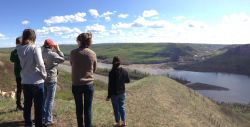
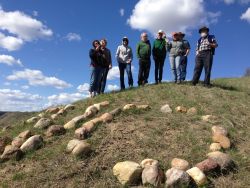
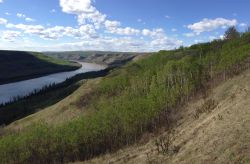
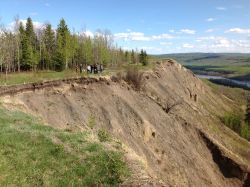

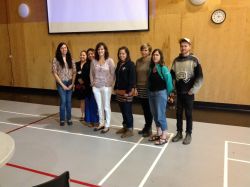
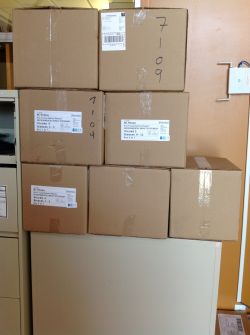
Commentaires
The project is presently
The project is presently undergoing AN environmental assessment (again) and public comment amount has only recently closed.